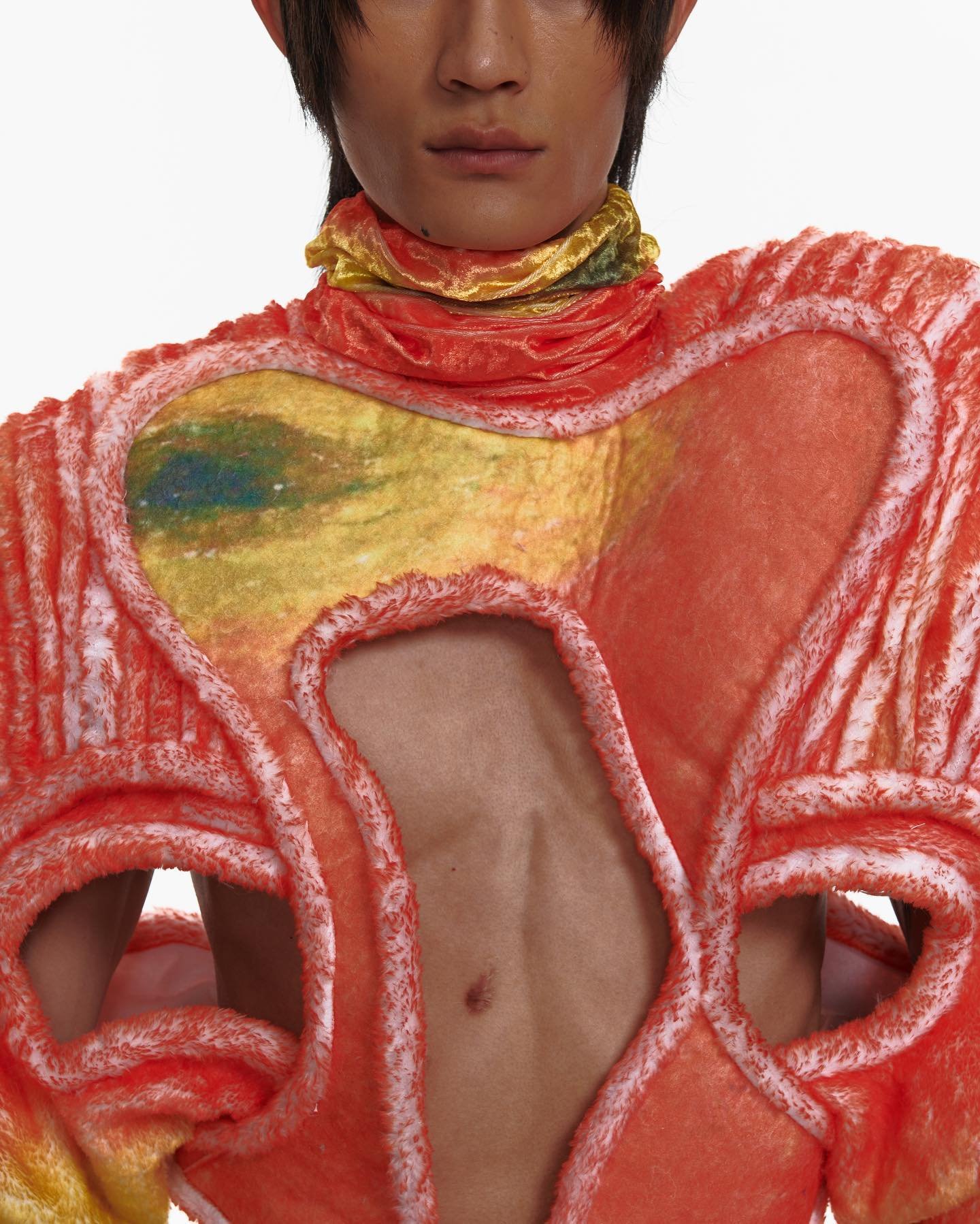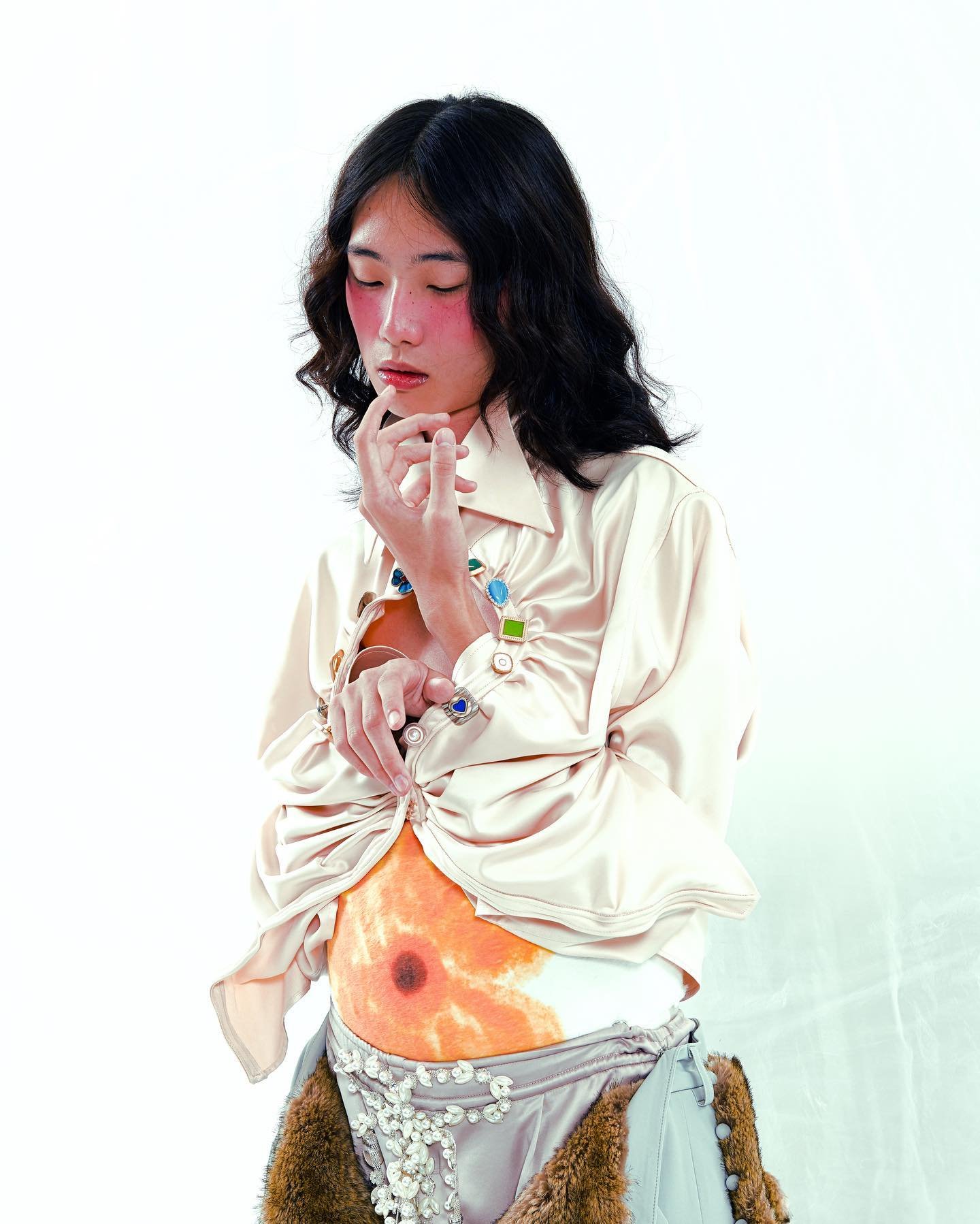Aojierou
Looking at his two previous collections stirs excitement about what’s coming next for designer Aojierou.
A strong advocate for expression through style and the connection between history and fashion, Aojierou is an up and comer to look out for. Playing with texture, colour and gender his pieces open the door to a new era of fashion where boundaries are pushed and freedom of choice is celebrated.
Interviewing Aojierou we dig deeper into the why of his previous collections and discuss his future as a designer. His insights tell us a lot about where fashion is headed, and the new inclusive route it’s taking in 2022.
Having spent time studying and designing in different countries, how would you say your work as a designer has been influenced by each place you have lived? Do the cultural differences in style and expression change your perspective as a designer?
I've never lived in a city for more than six years, and I've lived in five cities since I was born. The clash of cultures keeps me interested in cultural exploration. I don't limit my design ideas to just one culture, I incorporate them all into something new.
With the detrimental effects the pandemic has had on society, along with the rise of social media influencer culture on platforms such as Instagram and TikTok, it is obvious the shift in attitudes towards personal style and clothing in general. How do you think people’s relationship with what they choose to wear has developed and will continue to develop? Is this something you tend to consider when designing?
I think fashion design is not just about leading the style. Clothing is the main performance of human culture, every era of clothing of each ethnic group has this particular significance. The new generation of fashion designers for this diverse society have a deeper understanding, so there will be more diversity of clothing styles. Clothing, music and film all express emotions and ideas. There used to be no pants designed for women or tights designed for men, but as people's minds evolved, so did their clothing. The fashion designer is the one behind all of this. They help people to accept the diversity of society. Almost every social revolution or awakening of human consciousness can’t be separated from the change of clothing. People took off the clothes from the previous dynasty to adapt to the new society. Women wear men's work clothes on behalf of equal rights and the rise of female consciousness. LGBT people parade in colorful costumes to show the world that they can live with confidence. Clothing is the second layer of human skin. When we design clothes, we're also making history.
Your collection, Double Sided Adhesive, depicts a fictional family set up, host to distinct characters each with various conceptual designs based off of them. You use your designs to delve into a multitude of issues like disordered eating, gender identity, sexuality etc. What is the overarching message behind this collection and each character encompassed in it?
This series comes from a time when I wondered if my family might have secrets under their social identities. I think today's society gives everyone a definition of who you should be. Most people follow it, but they still have something inside of them. It can't be accepted by the public, so they hide it under the skin. All I want to do is help them become what they want to be. Open the skin and reveal their desires.
Aesthetically, it is clear the differences between your collection Double Sided Adhesive and The Wave of Unemployment in Dongbei. How did your creative process differ between projects? Was one a more challenging project than the other?
I made Dongbei like a year ago. My understanding of aesthetics and my ability to design have improved a lot this year. I love that each project does not have a similar theme. If you ask me which one is my best collection, the answer is the next one.
Out of each country you have lived and studied in, which has aided in your development as a designer the most? What other places do you plan to live andwork in your future as a designer?
Montreal, Canada by far is the city that has helped me the most with my design development. I did a lot of photography and fashion shows there. I plan to live and work in Antwerp later.
Your intense periods of studying and incredibly detailed projects have created a strong and diverse portfolio of work. What other projects are you working on next?
My brand is already in the works, and I'm going to develop some wearable clothing. After I go to school in Antwerp I will develop some amazing collections.
During such a tumultuous and political time, what do you feel your responsibilities are as an emerging designer? What message would you like your work to convey?
As a designer, I need to help some groups speak up. I want to design for, like, plus-size groups. I want my work to convey that it doesn't matter if you're socially acceptable or not, there will always be people who will support you and create for you.
interview BETH COOK
What to read next





















